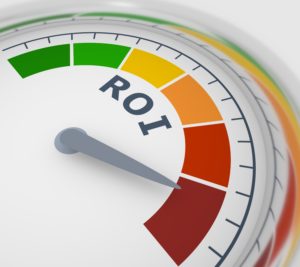Modern innovations are racing toward a sustainable and eco-friendly world. Climate change is quickly accelerating, and many efforts are being put forth to make the planet a safer and more inhabitable place for all time. One such innovation being used and researched right now is renewable diesel. Renewable diesel has a range of benefits and can help humanity be cleaner and more sustainable down the road. Here’s a guide about everything you need to know concerning renewable diesel.
What is Renewable Diesel?
Renewable diesel, also called green diesel by some, is a biofuel that has the same chemical makeup as traditional petroleum diesel. Renewable diesel meets the standards necessary to be used in pipelines, storage tanks, and diesel engines that only use traditional diesel.
Renewable diesel is made and produced from biomass materials such as vegetable oils, animal fats, greases, algae, crop excess, wood, sawdust, and switchgrass. The process for producing it is complex but involves thermochemical alterations, hydrotreating, gasification, and pyrolysis. Right now, California leads the nation in renewable diesel use, using almost all that is produced in the country.
Advantages of Renewable Diesel
There are a plethora of reasons to use renewable diesel. To begin, it results in lower emissions, cleaner air, and more efficient burning of fuel than traditional diesel or other gasoline substitutes. It can also be stored more easily and remains stable for longer periods of time when stored.
Although traditional diesel and renewable are often confused for one another, they’re entirely different products, though both are made from organic biomass. The differences are found in their environmental impact; renewable diesel, for example, runs cleaner and is of a higher quality than traditional diesel fuel.
Diesel in High Concentrations
Unknown to many, only renewable diesel can be used in large concentrations and as the only fuel in engines that require diesel fuel to run. Standards and regulations are also making engines run even cleaner and more smoothly. For example, the EN 15940 standard has recently been passed in Europe and is helping to standardize the use of renewable diesel in helpful and convenient ways.
Both forms of diesel are hydrocarbons, but traditional diesel is an esther, which means some types of engines cannot run with frequent and consistent stability when given only traditional diesel. This is why traditional diesel is still limited in many parts of the world to only seven percent of maximum concentration.
Other Unique Benefits
It’s great for a variety of reasons! In addition to running cleaner and more efficiently than traditional diesel fuel, it doesn’t require special rules and regulations for vehicles and can be stored more easily and for a longer period of time. In fact, storage can be far colder than traditional storage and the chemical composition of the fuel will not begin to break down, even in arctic conditions.
Traditional diesel may increase the frequency of oil checks and other maintenance events in the vehicle it’s being used for, but no such problems or complications exist for renewable diesel. Engines that run on renewable diesel run faster and with more power than traditional diesel because renewable diesel has an incredibly high cetane number, ranging from about seventy-five to ninety-five. In contrast, the cetane number of a traditional number of traditional diesel runs from about fifty to sixty.
The Renewable Diesel Process
We’ve seen that renewable diesel runs cleaner and more efficiently than traditional diesel biofuel, helping the local and global community be free of pollutants and contributing to a reduction in climate change. But how is it made? While the process is complicated, it can be boiled down to three simple steps.
First, companies receive animal fat and used cooking oil from restaurants and supermarkets. After the material is received, it runs through a processing plant. It’s treated to remove impurities and hydrotreated to remove oxygen and separate the water which is already present. It’s also isomerized to account for engine standards. Once the fuel is made, it’s stored in cold environments then distributed to those who need and want it, primarily (for now) in California. That’s the process, simplified.
Are you looking to make a change in your approach to fuel buying? Are you looking to save time and resources? Check out our free assessment and measure the relative costs of your fuel buying strategy options in 5 minutes or less.








